Anything worth doing doesn’t come without the risk of failure.
During the middle of the first week of July 2015, The Watercraft Journal attempted to crisscross the entire width of the State of Florida from West Coast to East Coast and back West in a single outing called the “2015 WCJ Long Haul.” This would tally over 280 total miles, require passing through five locks twice and all the while maintaining a strict timetable as the government-managed locks operate during specific hours. Stopping for fuel would be almost entirely out of the question (save for a single stop halfway through), and depending on the conditions of Lake Okeechobee, we could be ahead or behind schedule.
Managing the logistics of such a mission were far beyond our skill set, so we proposed this hair-brained notion to Jetski Junkies’ Kev Hemingway. Hemingway has guided his club (and others) over literally tens of thousands of miles of waterways, and is a stalwart navigator – a perfect fit for what we needed. Thankfully, it took very little convincing to wrangle Hemingway on board who quickly devised a timetable for our ride, and started mapping out our waypoints. Initially, the plan was to drive as far east as the Highway 1 bridge in Stuart, Florida, but realized that would require a second fueling stop, thus making reaching the westward locks in time impossible.
Rather, we opted to go “highway to highway” – from HWY 75 to 95 and back – starting in the Gulf of Mexico at Punta Rassa Landing, and riding beneath the HWY 95 bridge to Monterrey Marina in Stuart for fuel before turning back west again. Other constraints began to pile up: we had a start time for 6:30am because PWC cannot be operated as much as a half an hour before sunrise, how much fuel we could carry, and we had to abide by all the “no wake” and slow speed zones. Our GPS tracking app would show if we were speeding.
Early in our planning, Sea-Doo expressed immediate interest and offered up a pair of naturally-aspirated 155-horsepower GTIs. With 15.9 gallons of fuel capacity, we needed far more to carry us the distance. We reached out to Bob Chamberlain of Kool PWC Stuff who graciously offered the use of two of his versatile watercraft racks. Working with Rotopax, Chamberlain not only equipped our two skis with a pair of stainless steel, powder-coated racks, but each GTI with four 3-gallon Rotopax jerry cans. Tall and narrow, Kool PWC Stuff engineered an ingenious locking rack system that fixes two gas cans to each side of the rack with a simple twist-and-lock system. While we stocked one Sea-Doo with an Igloo cooler with drinks and provisions, the other received an extra pair of 5-gallon fuel cans for added measure.
Hemingway brought to the table Ride Power USA who provided a pair of 12amp phone chargers. Fed directly from the battery, the chargers kept our smartphones alive, which was particularly helpful as we used them both for redundant navigation as well as for tracking our progress on the Glimpse app for our readers to follow live as we rode. We also received a pair of EZ Throttle trigger extensions that mounted easily to the iBR throttles with little fuss. Jerry Gaddis of PWC.Life provided us with a pair of their fast-drying jerseys, and JetRenu, who has been a faithful supporter of The Watercraft Journal, happily donated some decals.
Prior to launch, we topped off the skis’ tanks as well as all of the fuel cans. With well over an additional 130 pounds atop each Sea-Doo, we would be riding with the equivalent of a second rider for most of the distance. The marine forecast looked promising with only the threat of afternoon thunderstorms in select portions of Central Florida. Otherwise, temps would be typically warm but not unbearable, and the water-level slightly below average. Now the trick was getting through all five locks – Franklin, Ortona, Moore Haven, Port Mayaca, and St. Lucie – in time.
It was still dark on Wednesday morning when we backed the GTIs in the water. The bright hues of the Wake 155 and GTI 155 SE radiated next to the darkened landing, their transoms low in the water. With little fanfare and the eastern sun brightening the skyline, we set off. From Punta Rassa we immediately hit a slow speed zone through Cape Coral before passing through our first (and ultimately, our final) lock of the day,
the W.P. Franklin Lock. As we waited for the water to rise, Hemingway immediately motioned to the lockmaster.
“We’re setting a speed record,” he bellowed above. “We’re hoping to make it back in time for your final lock-through at 4:30.” Scratching his head and puffing on a morning cigarette, the lockmaster shook his head, “That ain’t gonna happen. It’s too far to travel.” Hemingway began to plead, asking for the “absolute latest” that he’d let us through. The lockmaster paused, scratched his head again and replied, “You get here 10 ’til, and I’ll let you through.” We were golden.
From Franklin to Ortona Lock was a breeze, and took little time to pass through the straight-and-narrow Caloosahatchee River cutting through La Belle, Florida. With only a few miles before reaching the Moore Haven Lock, and more importantly, Lake Okeechobee, Hemingway signaled to refuel. The stop ate up precious minutes, but seeing our GPS alerted us that we were nearly 30 minutes ahead of schedule, we didn’t sweat much. Unfortunately, we arrived as Moore Haven was already locking a large trawler, causing us to wait and nearly eating up our extra time.
Construction alongside the cut running between Moore Haven and Lake Okeechobee slowed us somewhat prior to the lake. Okeechobee is the largest freshwater lake in the state of Florida, and the largest freshwater lake “completely within a single one of the lower 48 states.” Notably shallow and susceptible to high winds, Lake Okeechobee can be incredibly fickle. Alas, that is how we found her this morning. 14 mile-per-hour winds whipped the lake into a boiling pool of 3-to-5 foot white-capped chop that could hardly be read beneath a 10am sun. Our little GTIs were never designed to tackle such a sea state particularly overladen with so much fuel.
Our original aspirations for crossing Okeechobee in 20 minutes were long gone, as it took us nearly 40 to reach the halfway marker. Gathering our bearings, we spotted the distant towers of a powerplant only slightly north of the lock. With a bearing and a visible marker in sight, we charged through the second half of the lake that thankfully began to smooth the closer to neared the shore. With Port Mayaca Lock now within reach, our faithful GTIs pulled into the lock no worse for wear (unlike their riders).
With nearly an hour wasted battling Okeechobee, the expression on Hemingway’s face said it all, we weren’t going to make the St. Lucie Lock’s mandatory 11am lock schedule in time. Desperate, we waved over the lockmaster and plead our case. Deep craggy lines appeared in the old sailor’s weathered face as he smiled with a toothy grin, “You’re in luck boys. New matching orders came down saying that we have to lock through any boat that comes ’round. They’ll let you through no problem.”
Re-energized, we charged hard knowing we had to make up lost time but elated that St. Lucie would let us through. The short distance between Port Mayaca and St. Lucie alternates between open everglades and residential, and becomes particularly populated as we pass into Stuart. Approaching the lock, we found the gates closed, and the chime unresponsive. Pulling the cord to alarm the bell, the lockmaster walked out with a bullhorn.
“We operate under a limited schedule,” he barked. Immediately, our joy deflated. We shouted back, “The lockmaster in Mayaca said you had to let us through.” The lockmaster apologized and reiterated their strict operating schedule before asking, “Will you be filing a complaint?”
Confused, we shrugged, “No, but we were told you’d let us through.” The lockmaster leaned in, “If you say you’re going to complain, I can let you through.” We shot each other a quick look and yelled in unison, “We’d like to file a complaint!” Immediately, the alarm sounded and the lock doors began to creep open. Once inside the lockmaster explained the woes of governmental bureaucracy and that some muckety-muck had complained to his buddies when he was turned away in his private yacht. Since that time, if you complain, the St. Lucie Lock would let you through anytime.
Racing to Monterrey Marina, we were forced to waste nearly an hour waiting for workers to finish their lunch and activate the pump. The pump was a high volume unit that is ideal for larger boats but quickly overwhelms the narrow filling necks of Sea-Doos and small gas cans. This meant that we had to tenuously hold the nozzle just outside of the fuel inlet and trickle a small stream into our tanks. The arduous process devoured precious time that we simply didn’t have to spare. With our tanks filled as best as we could, we immediately doubled back and returned to the St. Lucie lock, where the lockmaster had kept his gates open for us.
The journey to Port Mayaca was uneventful, and as we exited into Lake Okeechobee, we met with another fishing trawler who affirmed that the lake was smooth as could be (unlike that morning). True to their word, the wind had died, skies had cleared, and chop had reduced down to gentle 1-to-2 foot. By the time we reached Moore Haven, we had been riding continually for nearly 8 hours. Exhausted but enthusiastic, we visualized returning back to Punta Rassa victorious even as dark clouds gathered ahead.
Returning to the same pebbled beach where we had refueled before, we topped off our GTIs and raced back to Ortana Lock. Before we could though, the skies broke and dumped a mid-summer rainstorm upon us. Pelting rain while traveling at 50-to-55 mph is brutal on any exposed skin, and Hemingway’s floppy hat and sunglasses did little to shield his face. We had packed a race helmet and goggles precisely for this sort of thing, and happily kept our face protected from the stinging rain that blasted our arms and legs pink.
While locking at Ortona and realizing that our time was running thin, we begged the lockmaster to radio ahead to Franklin that we were on our way. He waved in affirmative and bid us good luck. With the rain behind us and with only one more lock to go, we were in the final stretch. A quarter past 4 o’clock came a went. We sped as fast as our GTIs would carry us, but 4:30 neared and passed. Every bridge in the distance fooled us into thinking it was the lock.
The Sea-Doo’s in-dash clock read 4:41pm when we pulled up to the lock. Hemingway immediately dialed the lock’s office on his cellphone as we yanked on the alarm cord. The office lights were out. The phone rang and rang with no reply. Desperate, we yelled to nobody present. Not only was the lock closed, but the workers had left early despite large 3-foot-tall signs reading “Open 7am to 5pm”. We were screwed.
To our right, we spotted a large camping ground. We devised a plan to beg any camper with a boat trailer to lift us from one launch ramp on one side of the lock to the other. Pulling up to the ramp, a park ranger hustled to meet us, clearly irritated with our rate of speed. We explained our situation and asked if there was anyway to carry our skis to the other side of the park, to which the answer was a resonating “no.” It was there – some 30 miles from our goal – that our first Long Haul attempt came to a close.
Hitching a ride with the friendly park ranger to the truck parked an hour away, we had plenty of time to reflect. In light of all of our delays, our miscalculation of Lake Okeechobee, two fuel stops and a finicky fuel pump, we were ultimately thwarted by government employees looking to get out of work a few minutes early. All in all, we crossed over 235 miles in 11:30-plus hours. We averaged just over 20mph with a max speed over just over 58mph, which isn’t bad considering we passed through 9 locks.
All of our sponsors – Sea-Doo, Kool PWC Stuff, EZ Throttle, PWC.Life, Ride Power USA and JetReny – rallied to cover our costs, and because of them, this was even possible. And for their assistance and support we are immensely grateful, as well as to our readers. Throughout the day, we had been swarmed with emails, instant messages and Facebook posts from riders wanting to join, upset that we didn’t invite all to participate. Exclusivity was not our original intent, but seeing if it was even possible was – to which we say emphatically YES! And we will be attempting the Long Haul again (hopefully this year). When we do, it will be an open invite so stay tuned!
[PS. Expect to see a full video webisode on the 2015 WCJ Long Haul in the coming month. – Ed.]



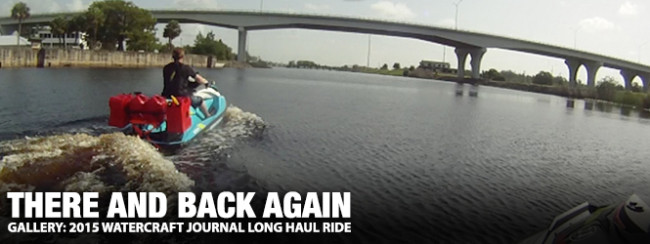
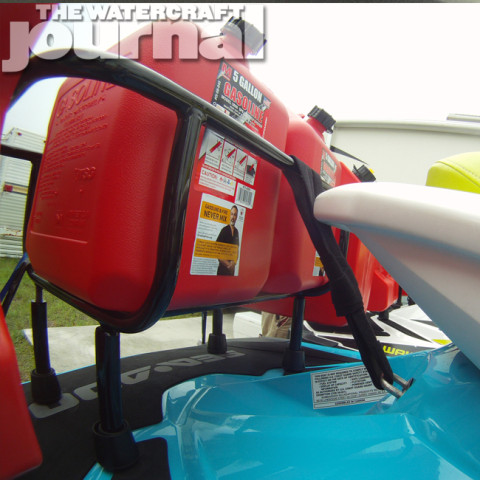
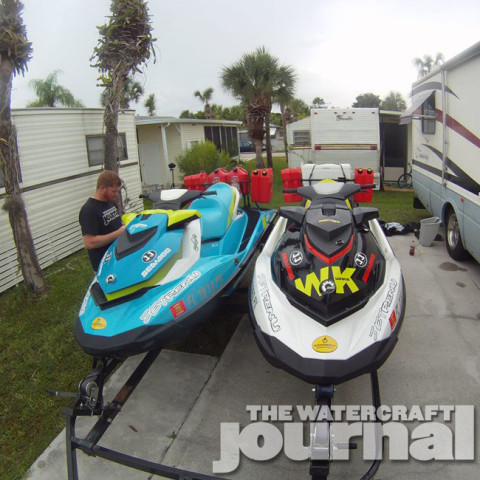




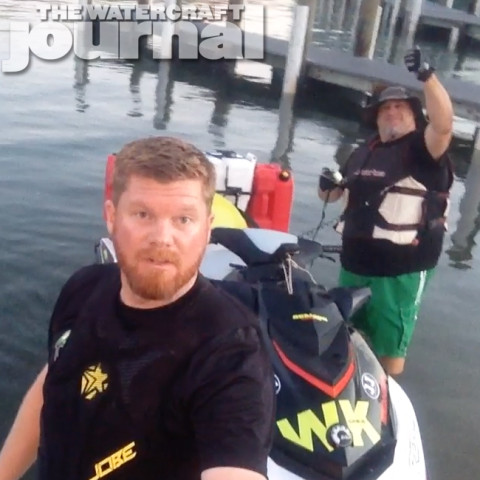

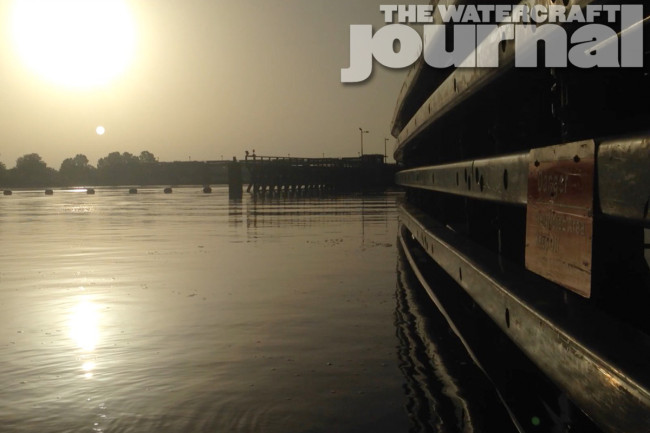
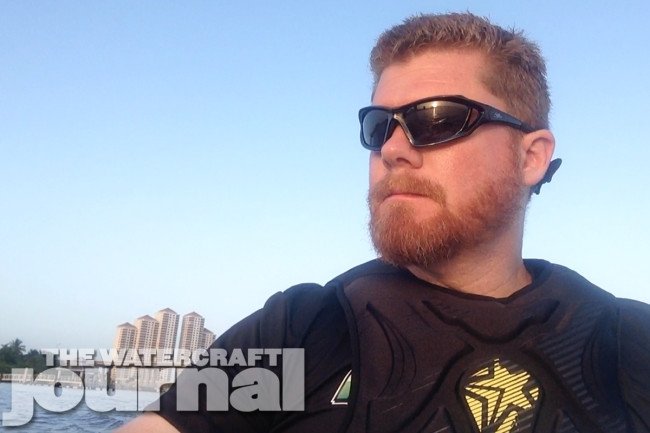
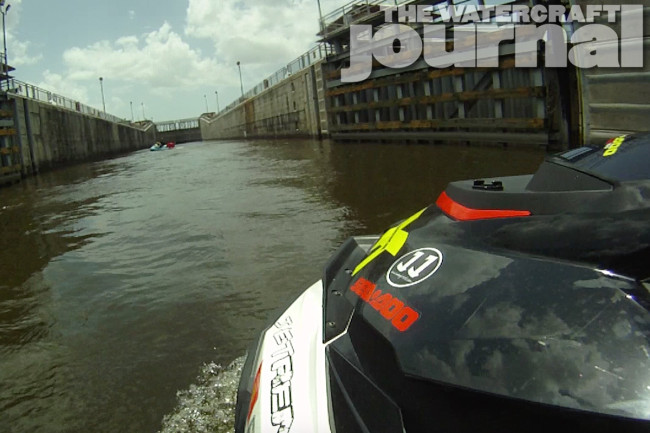

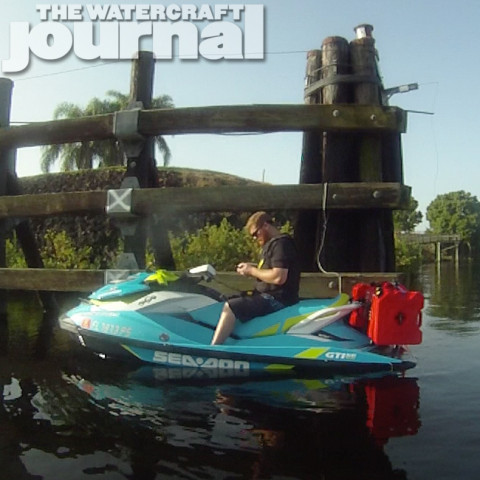

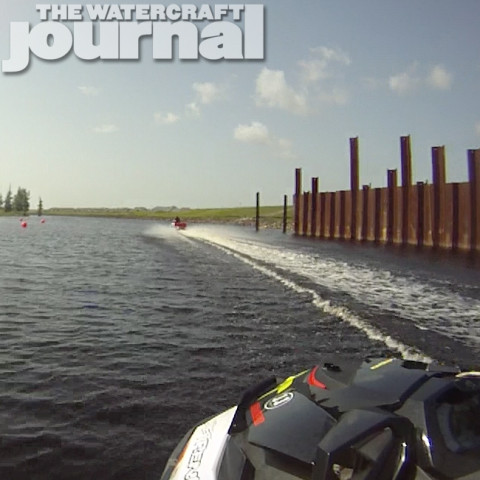
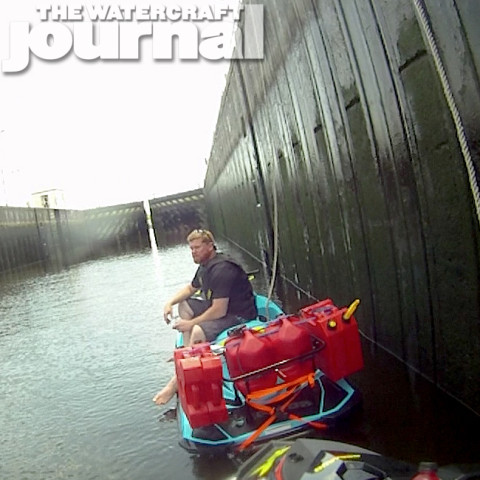
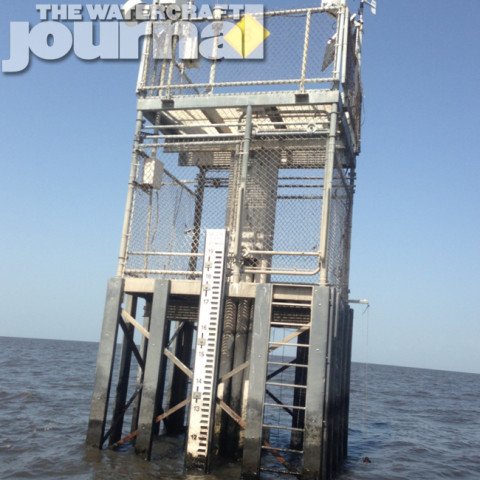


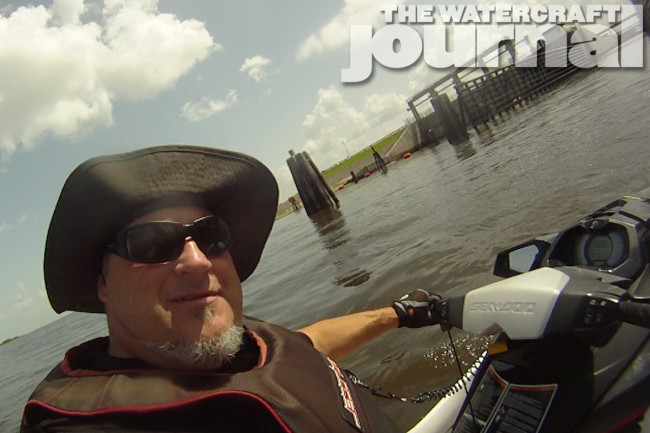
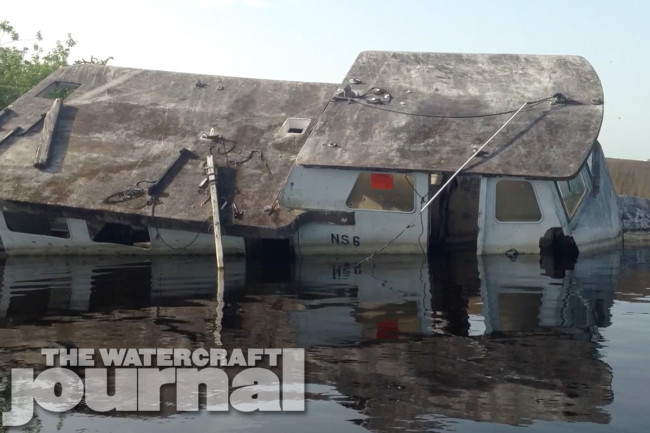



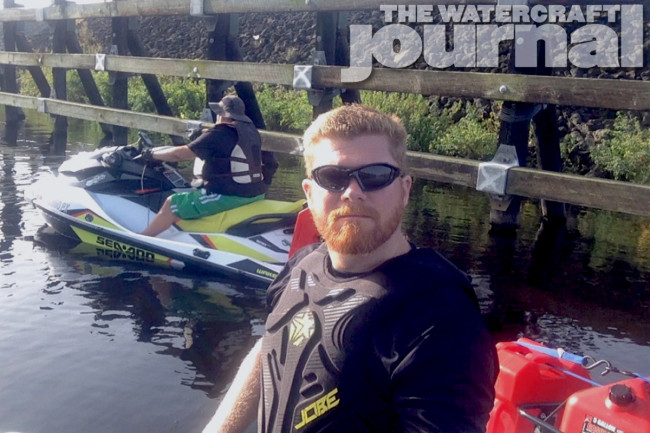
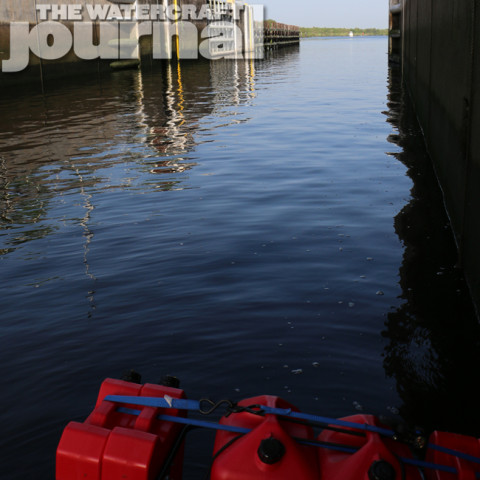
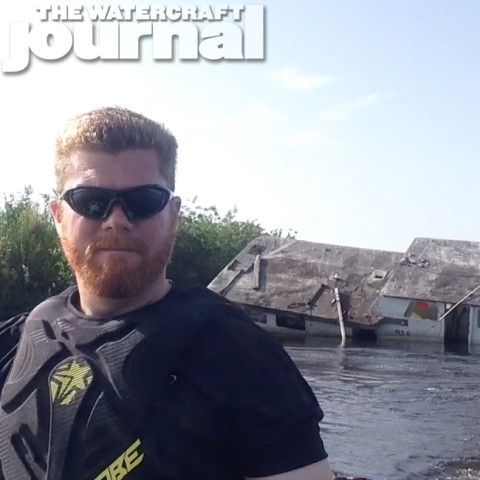

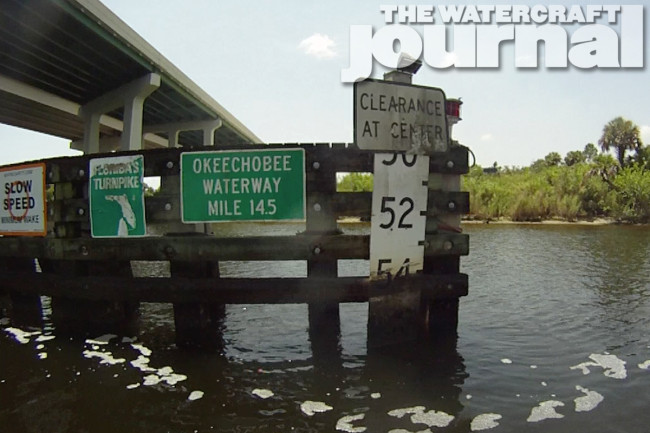
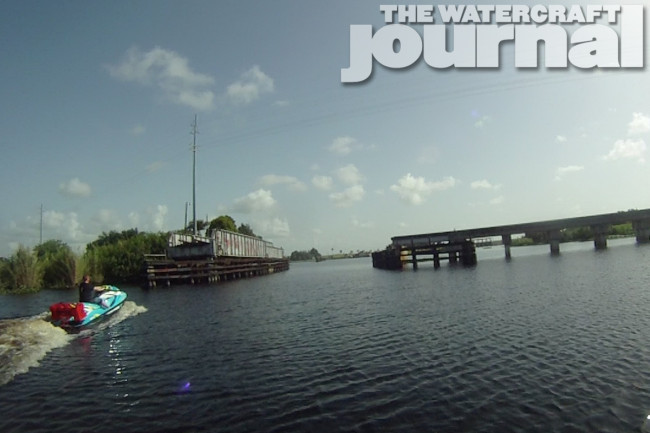
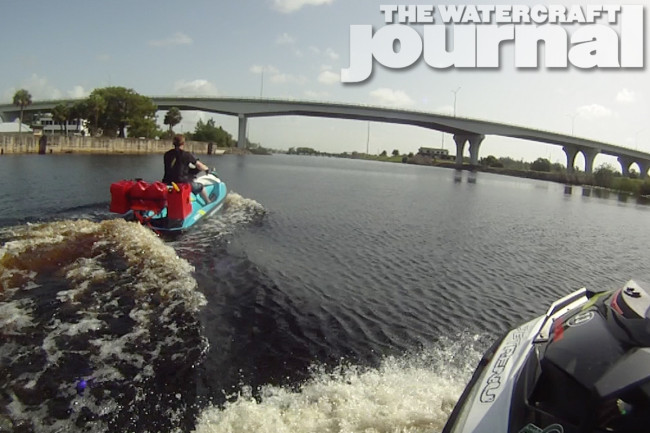
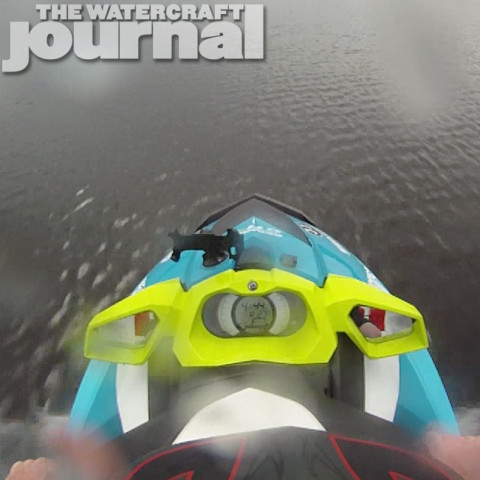
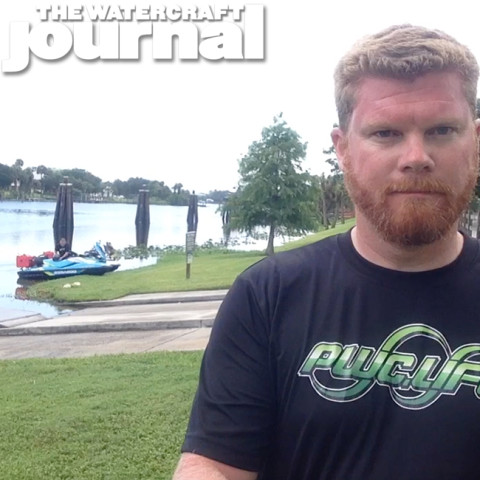
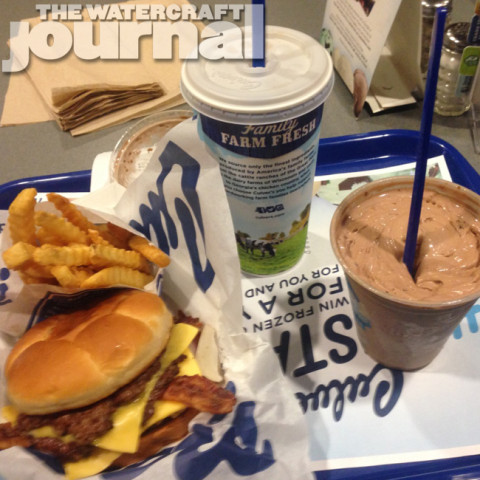

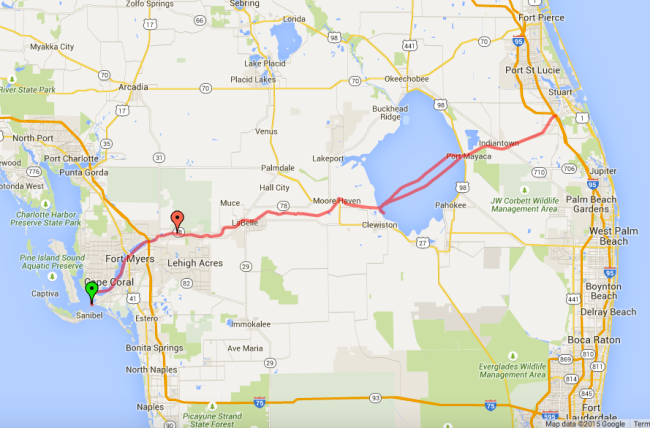
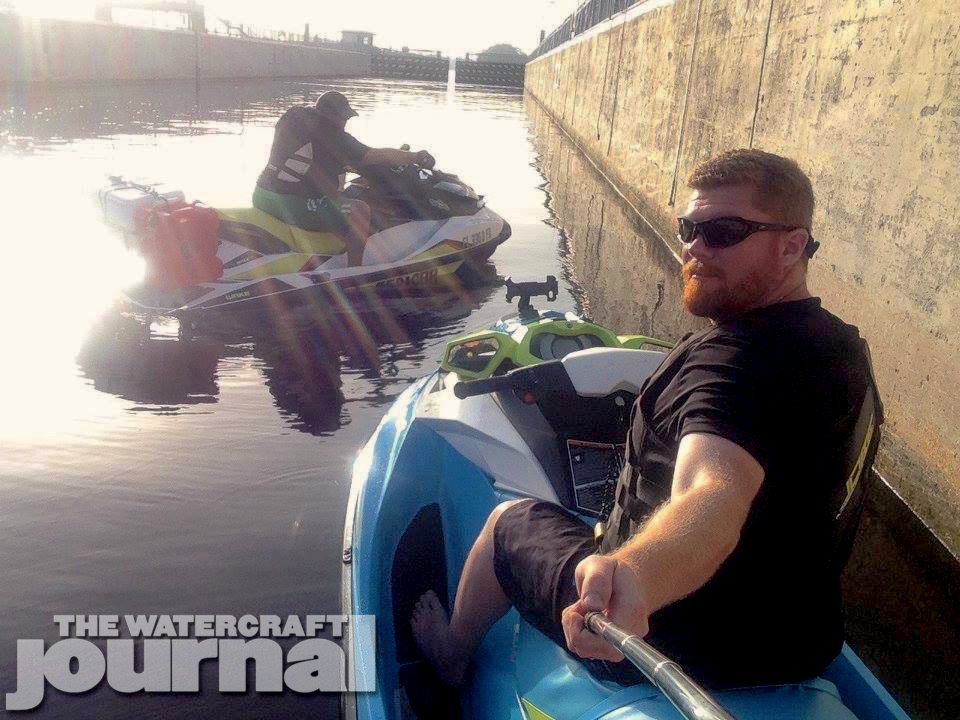







































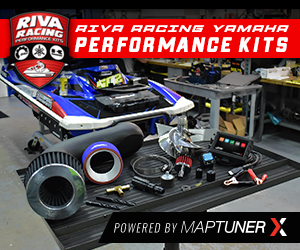
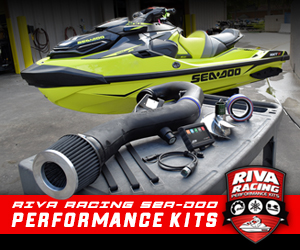

Great article! I loved you took on the challenge. I live in Louisiana and would possibly be intrested in participating in such a ride.
Couple of questions:
Do you think a different ski would have yielded a different result? Maybe one faster/more powerful (you would have not lost as much time on the lake battleing waves if you had been say on a FX Yamaha or GTX Seadoo) or one more fuel efficient (less refuels)
Did you put the SeaDoos in Eco mode?
Good luck if you decide to do this again!!
Glad you enjoyed it, Corey! We’re considering another attempt with a larger crowd – in fact, we had hopes to do it last month but needed to push it back. When we do schedule a redo, we’ll let all of our readers know.
It is very likely that a different ski would’ve fared better. I’ve considered either a GTX S 155 or a FX HO for the next attempt, as the larger ski will offer more storage capacity, won’t be hindered by the added weight of fuel, and will manage Lake Okeechobee better.
We rotated through the different iTC settings often – Touring, Sport and Eco – all depending on the need at the given time. I also was faced with contending with poor navigation through the lake and rider fatigue on behalf of my partner. I had to slow to let him catch up several times throughout the day.
The record is very doable given the right combination of factors, and I think an animated and fit group of riders could execute it without much trouble.